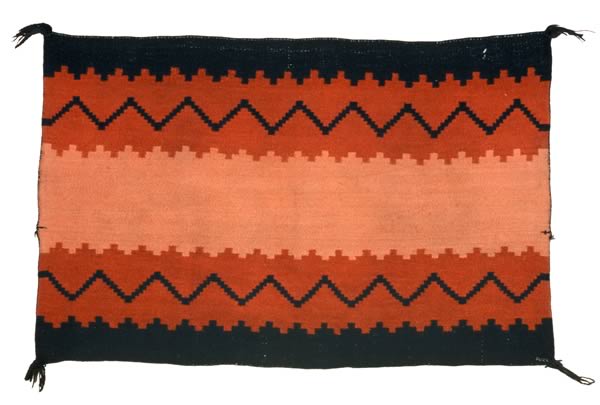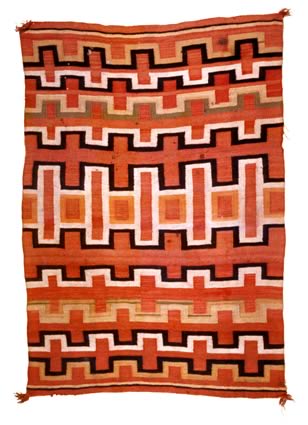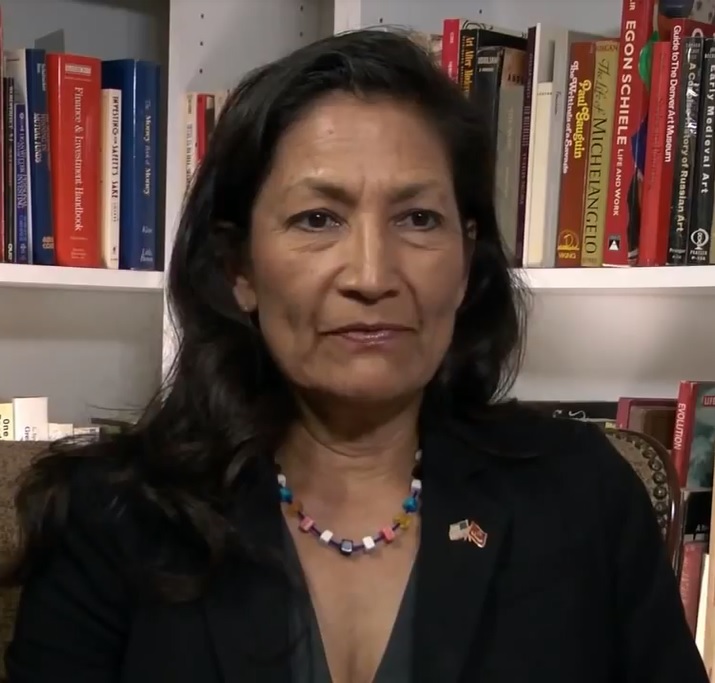|
Manta (dress)
A manta is a rectangular textile that was worn as a blanket or as a wrap-around dress.Sublette, Mark''Navajo Textiles.'' Retrieved 20 March 2012. When worn as a dress, the manta is held together by a woven sash. Mantas are worn by such indigenous peoples as the Navajo, Hopi, and Pueblo peoples. Today they are worn during important ceremonies, such as weddings, ''Penn Museum: Juncanoo Exhibit.'' Retrieved 20 March 2012. dances, and feast days See also * Navajo weaving *Serape
The serape or jorongo is a lo ...
[...More Info...] [...Related Items...] OR: [Wikipedia] [Google] [Baidu] |
Manta 1860
Manta or mantas may refer to: * Manta ray, large fish belonging to the genus ''Manta'' Arts and entertainment Fictional entities * Manta (comics), a character in American Marvel Comics publications * Manta (''Uridium''), a spaceship in the British computer game ''Uridium'' * Manta Oyamada, a character in the Japanese manga series ''Shaman King'' * Manta and Moray, amphibious superheroes from the 1970s TV series ''Tarzan and the Super 7'' Film * ''Manta, Manta'', a 1991 German-language action comedy film Music * Death (metal band), an American band known as Mantas (1983–1984) * Jeffrey Dunn (born 1961), known as Mantas, and his band Mantas, formed in 1986 People * Manta (surname) (includes a list of people with that name) * Mantas, a given name and a surname (includes a list of people with that name) * Manta people, nomadic ethnic group in Bangladesh Places * Manta, Benin a town and ''arrondissement'' in Atakora department, Benin * Manta, Cundinamarca, a municipality and ... [...More Info...] [...Related Items...] OR: [Wikipedia] [Google] [Baidu] |
Indigenous Peoples Of The Americas
The Indigenous peoples of the Americas are the inhabitants of the Americas before the arrival of the European settlers in the 15th century, and the ethnic groups who now identify themselves with those peoples. Many Indigenous peoples of the Americas were traditionally hunter-gatherers and many, especially in the Amazon basin, still are, but many groups practiced aquaculture and agriculture. While some societies depended heavily on agriculture, others practiced a mix of farming, hunting, and gathering. In some regions, the Indigenous peoples created monumental architecture, large-scale organized cities, city-states, chiefdoms, states, kingdoms, republics, confederacies, and empires. Some had varying degrees of knowledge of engineering, architecture, mathematics, astronomy, writing, physics, medicine, planting and irrigation, geology, mining, metallurgy, sculpture, and gold smithing. Many parts of the Americas are still populated by Indigenous peoples; some countries have ... [...More Info...] [...Related Items...] OR: [Wikipedia] [Google] [Baidu] |
Navajo People
The Navajo (; British English: Navaho; nv, Diné or ') are a Native American people of the Southwestern United States. With more than 399,494 enrolled tribal members , the Navajo Nation is the largest federally recognized tribe in the United States; additionally, the Navajo Nation has the largest reservation in the country. The reservation straddles the Four Corners region and covers more than 27,325 square miles (70,000 square km) of land in Arizona, Utah, and New Mexico. The Navajo Reservation is slightly larger than the state of West Virginia. The Navajo language is spoken throughout the region, and most Navajos also speak English. The states with the largest Navajo populations are Arizona (140,263) and New Mexico (108,306). More than three-fourths of the enrolled Navajo population resides in these two states. [...More Info...] [...Related Items...] OR: [Wikipedia] [Google] [Baidu] |
Hopi People
The Hopi are a Native American ethnic group who primarily live on the Hopi Reservation in northeastern Arizona, United States. As of the 2010 census, there are 19,338 Hopi in the country. The Hopi Tribe is a sovereign nation within the United States and has government-to-government relations with the United States federal government. Particular villages retain autonomy under the Hopi Constitution and Bylaws. The Hopi language is one of 30 in the Uto-Aztecan language family. The majority of Hopi people are enrolled in the Hopi Tribe of Arizona but some are enrolled in the Colorado River Indian Tribes. The Hopi Reservation covers a land area of . The Hopi encountered Spaniards in the 16th century, and are historically referred to as Pueblo people, because they lived in villages (''pueblos'' in the Spanish language). The Hopi are thought to be descended from the Ancestral Puebloans (Hopi: ''Hisatsinom''), who constructed large apartment-house complexes and had an advanced culture ... [...More Info...] [...Related Items...] OR: [Wikipedia] [Google] [Baidu] |
Pueblo People
The Puebloans or Pueblo peoples, are Native Americans in the Southwestern United States who share common agricultural, material, and religious practices. Currently 100 pueblos are actively inhabited, among which Taos, San Ildefonso, Acoma, Zuni, and Hopi are the best-known. Pueblo people speak languages from four different language families, and each Pueblo is further divided culturally by kinship systems and agricultural practices, although all cultivate varieties of maize. Pueblo peoples have lived in the American Southwest for millennia and descend from Ancestral Pueblo peoples. The term ''Anasazi'' is sometimes used to refer to ancestral Pueblo people but it is now largely minimized. ''Anasazi'' is a Navajo word that means ''Ancient Ones'' or ''Ancient Enemy'', hence Pueblo peoples' rejection of it (see exonym). ''Pueblo'' is a Spanish term for "village." When Spaniards entered the area, beginning in the 16th-century with the founding of Nuevo México, they came acros ... [...More Info...] [...Related Items...] OR: [Wikipedia] [Google] [Baidu] |
Navajo Weaving
Navajo rugs and blankets ( nv, ) are textiles produced by Navajo people of the Four Corners area of the United States. Navajo textiles are highly regarded and have been sought after as trade items for over 150 years. Commercial production of handwoven blankets and rugs has been an important element of the Navajo economy. As one expert expresses it, "Classic Navajo serapes at their finest equal the delicacy and sophistication of any pre-mechanical loom-woven textile in the world." Navajo textiles were originally utilitarian blankets for use as cloaks, dresses, saddle blankets, and similar purposes. Toward the end of the 19th century, weavers began to make rugs for tourism and export. Typical Navajo textiles have strong geometric patterns. They are a flat tapestry-woven textile produced in a fashion similar to kilims of Eastern Europe and Western Asia, but with some notable differences. In Navajo weaving, the slit weave technique common in kilims is not used, and the warp is on ... [...More Info...] [...Related Items...] OR: [Wikipedia] [Google] [Baidu] |
Serape
The serape or jorongo is a long blanket-like shawl/cloak, often brightly colored and fringed at the ends, worn in Mexico, especially by men. The spelling of the word sarape (or zarape) is the accepted form in Mexico and in other Spanish-speaking countries. The term ''serape'' is for the rectangular woven blanket (no openings), though in more recent years it can also be used to refer to a very soft rectangular blanket with an opening in the middle for one's head, similar to a poncho called ''gabán'', or ''jorongo'' in Mexico. Modern variations of some serapes are made with matching hoods for head covering. The length varies, but front and back normally reach knee height on an average person. Available in various colors and design patterns, the typical colors of serapes from the highland regions are two-tone combinations of black, grey, brown, or tan depending on the natural color of the sheep flocks grown in the area, with large design patterns utilizing traditional indigenou ... [...More Info...] [...Related Items...] OR: [Wikipedia] [Google] [Baidu] |
Indigenous Textile Art Of The Americas
Textile arts of indigenous peoples of the Americas are decorative, utilitarian, ceremonial, or conceptual artworks made from plant, animal, or synthetic fibers by native peoples of both North and South America. Textile arts and fiber arts include fabric that is flexible woven material, as well as felt, bark cloth, knitting, embroidery,Gibbs 1 featherwork, skin-sewing, beadwork, and similar media. Textile arts are one of the earliest known industries. Basketry is associated with textile arts. While humans have created textiles since the dawn of culture, many are fragile and disintegrate rapidly. Ancient textiles are preserved only by special environmental conditions. The oldest known textiles in the Americas are some early fiberwork found in Guitarrero Cave, Peru dating back to 10,100 to 9,080 BCE.Stacey, Kevin"Carbon dating identifies South America's oldest textiles."''University of Chicago Press Journals.'' 13 April 2013. The oldest known textiles in North America are twin ... [...More Info...] [...Related Items...] OR: [Wikipedia] [Google] [Baidu] |
Hopi Culture
The Hopi are a Native American ethnic group who primarily live on the Hopi Reservation in northeastern Arizona, United States. As of the 2010 census, there are 19,338 Hopi in the country. The Hopi Tribe is a sovereign nation within the United States and has government-to-government relations with the United States federal government. Particular villages retain autonomy under the Hopi Constitution and Bylaws. The Hopi language is one of 30 in the Uto-Aztecan language family. The majority of Hopi people are enrolled in the Hopi Tribe of Arizona but some are enrolled in the Colorado River Indian Tribes. The Hopi Reservation covers a land area of . The Hopi encountered Spaniards in the 16th century, and are historically referred to as Pueblo people, because they lived in villages (''pueblos'' in the Spanish language). The Hopi are thought to be descended from the Ancestral Puebloans ( Hopi: ''Hisatsinom''), who constructed large apartment-house complexes and had an advanced cu ... [...More Info...] [...Related Items...] OR: [Wikipedia] [Google] [Baidu] |
Navajo Culture
The Navajo (; British English: Navaho; nv, Diné or ') are a Native American people of the Southwestern United States. With more than 399,494 enrolled tribal members , the Navajo Nation is the largest federally recognized tribe in the United States; additionally, the Navajo Nation has the largest reservation in the country. The reservation straddles the Four Corners region and covers more than 27,325 square miles (70,000 square km) of land in Arizona, Utah, and New Mexico. The Navajo Reservation is slightly larger than the state of West Virginia. The Navajo language is spoken throughout the region, and most Navajos also speak English. The states with the largest Navajo populations are Arizona (140,263) and New Mexico (108,306). More than three-fourths of the enrolled Navajo population resides in these two states. [...More Info...] [...Related Items...] OR: [Wikipedia] [Google] [Baidu] |
Native American Clothing
Native may refer to: People * Jus soli, citizenship by right of birth * Indigenous peoples, peoples with a set of specific rights based on their historical ties to a particular territory ** Native Americans (other) In arts and entertainment * Native (band), a French R&B band * Native (comics), a character in the X-Men comics universe * Native (album), ''Native'' (album), a 2013 album by OneRepublic * Native (2016 film), ''Native'' (2016 film), a British science fiction film * ''The Native'', a Nigerian music magazine In science * Native (computing), software or data formats supported by a certain system * Native language, the language(s) a person has learned from birth * Native metal, any metal that is found in its metallic form, either pure or as an alloy, in nature * Native species, a species whose presence in a region is the result of only natural processes Other uses * Northeast Arizona Technological Institute of Vocational Education (NATIVE), a technology school d ... [...More Info...] [...Related Items...] OR: [Wikipedia] [Google] [Baidu] |
Pueblo Culture
The Puebloans or Pueblo peoples, are Native Americans in the Southwestern United States who share common agricultural, material, and religious practices. Currently 100 pueblos are actively inhabited, among which Taos, San Ildefonso, Acoma, Zuni, and Hopi are the best-known. Pueblo people speak languages from four different language families, and each Pueblo is further divided culturally by kinship systems and agricultural practices, although all cultivate varieties of maize. Pueblo peoples have lived in the American Southwest for millennia and descend from Ancestral Pueblo peoples. The term ''Anasazi'' is sometimes used to refer to ancestral Pueblo people but it is now largely minimized. ''Anasazi'' is a Navajo word that means ''Ancient Ones'' or ''Ancient Enemy'', hence Pueblo peoples' rejection of it (see exonym). ''Pueblo'' is a Spanish term for "village." When Spaniards entered the area, beginning in the 16th-century with the founding of Nuevo México, they came acro ... [...More Info...] [...Related Items...] OR: [Wikipedia] [Google] [Baidu] |

_2007.jpg)







